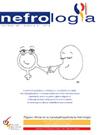西班牙巴塞罗那移民和当地人选择透析方式的差异 移民和当地人选择透析方式的差异
IF 2
4区 医学
Q2 UROLOGY & NEPHROLOGY
引用次数: 0
摘要
很少有研究分析了西班牙选择肾脏替代治疗(RRT)方式的自由。2009年至2020年,在西班牙加泰罗尼亚巴塞罗那del Mar医院ACKD门诊共就诊了673例ACKD(4期和5期)患者,我们回顾性比较了移民和西班牙患者,以分析移民对晚期CKD (ACKD)咨询中RRT决策的影响及其随后的演变,并确定该人群的社会和经济需求。113例(16.8%)为移民,560例为西班牙人(83.2%)。与西班牙人(HD 55.5%和25% PD)相比,移民在中心更频繁地选择HD(79.5%)而不是PD(12.5%),尽管他们更年轻,在日常生活的基本和工具活动上更独立。移民患者开始RRT时eGFR较低(8.1 mL/min/ 9.1 mL/min/1.73 m3), ACKD咨询随访时间较西班牙患者短(22个月对32个月)。语言障碍与以中心为基础的HD的更多选择相关,积极的就业状况有利于PD的选择。西班牙患者的相对死亡风险明显高于移民患者(HR = 3.27 [95% CI: 1.17-9.17], p = 0.024)。然而,经过年龄调整后,这种增加的相对死亡率消失了(HR 1.99 [0.69-5.76], p = 0.206)。近60%的人与社会服务没有联系。综上所述,巴塞罗那的大多数移民选择center-HD而不是DP,尽管他们更年轻,在日常生活的基本和工具活动上更独立,而且病情比西班牙患者好。考虑我们所服务的移民人口的社会经济和文化需求是有效减少卫生不平等的必要条件。本文章由计算机程序翻译,如有差异,请以英文原文为准。
Diferencias en la elección de la modalidad de diálisis entre inmigrantes y españoles en Barcelona
Few studies have analyzed the freedom to choose their renal replacement treatment (RRT) modality in Spain. In a total of 673 patients with ACKD (stage 4 and 5) seen at the outpatient ACKD clinic of Hospital del Mar, Barcelona, Catalonia (Spain) from 2009 to 2020, we retrospectively compared immigrant and Spanish patients in order to analyze the impact of migration on RRT decision-making and its subsequent evolution in advanced CKD (ACKD) consultation and identifies the social and economic needs of this population. One hundred thirteen (16.8%) patients were immigrants and 560 were Spanish (83.2%). Migrants more frequently chose HD at a center (79.5%) than PD (12.5%) compared to Spaniards (HD 55.5% and 25% PD) despite being younger and more independent in basic and instrumental activities of daily living. Immigrant patients started RRT with lower eGFR (8.1 vs. 9.1 mL/min/1.73 m3) and after a shorter follow-up time in the ACKD consultation than the Spaniards (22 vs. 32 months). The language barrier was associated with a greater choice of center-based HD and active employment status favored the choice of PD. Spanish patients had a significantly higher relative risk of mortality compared with immigrant patients (HR = 3.27 [95% CI: 1.17–9.17], p = 0.024). However, after adjustment by age, this increased relative risk of mortality disappeared (HR 1.99 [0.69–5.76], p = 0.206). Almost 60% individuals were not linked to social services. In conclusion, most immigrants in Barcelona choose center-HD versus DP despite being younger and more independent in basic and instrumental activities of daily living and being in a better condition than Spanish patients. Considering the socioeconomic and cultural needs of the immigrant population we serve is necessary to effectively reduce health inequities.
求助全文
通过发布文献求助,成功后即可免费获取论文全文。
去求助
来源期刊

Nefrologia
医学-泌尿学与肾脏学
CiteScore
3.40
自引率
7.70%
发文量
148
审稿时长
47 days
期刊介绍:
Nefrología is the official publication of the Spanish Society of Nephrology. The Journal publishes articles on basic or clinical research relating to nephrology, arterial hypertension, dialysis and kidney transplants. It is governed by the peer review system and all original papers are subject to internal assessment and external reviews. The journal accepts submissions of articles in English and in Spanish languages.
 求助内容:
求助内容: 应助结果提醒方式:
应助结果提醒方式:


